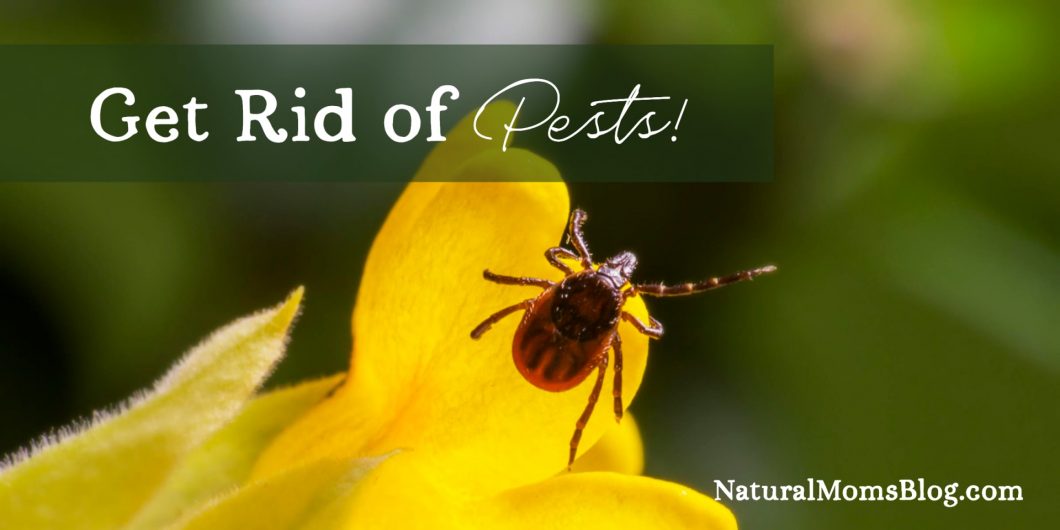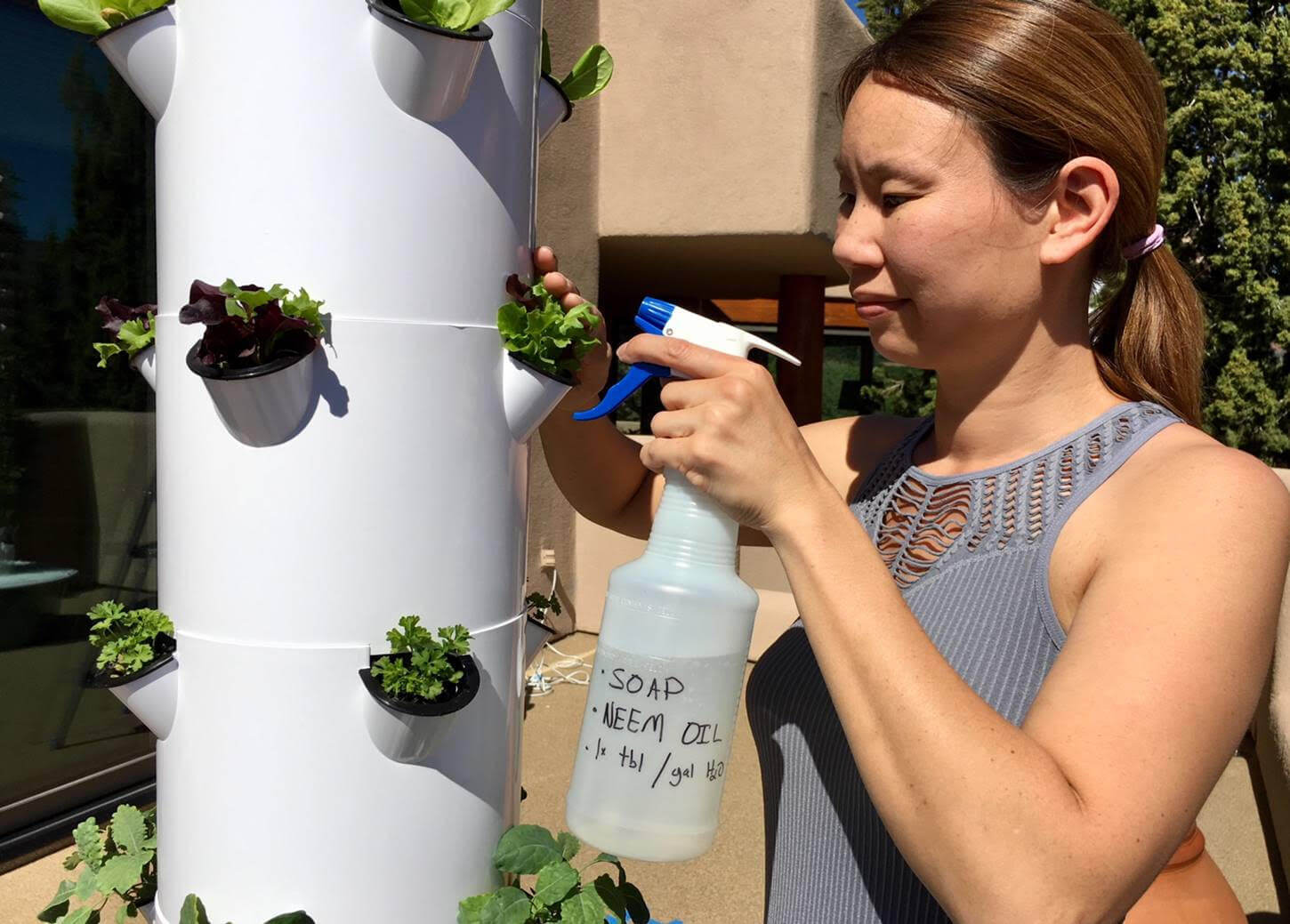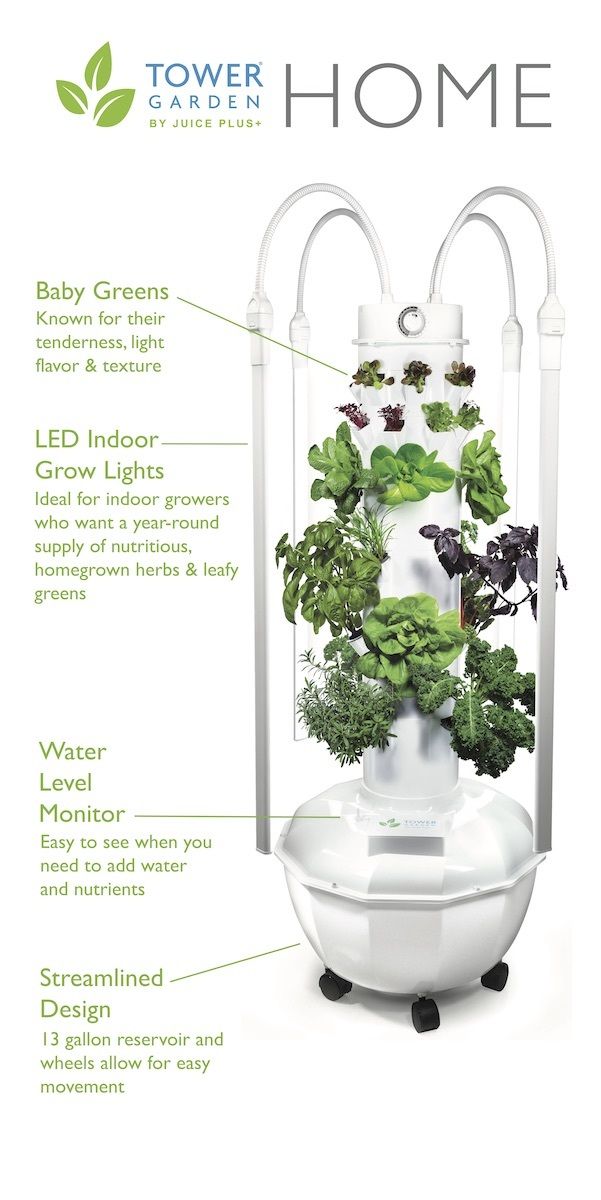- in Gardening by Alexis Rodrigo
- |
- 3 comments
More Ways to Get Rid of Pesky Pests in Your Tower Garden

In a previous post, I shared how my Tower Garden plants got infested with spider mites and the neem oil solution I sprayed to get rid of them.
Since then, I've come across even more non-toxic and organic pesticides for edible gardens.
If you're looking for a way to eradicate spider mites and other pests on your garden, whether on a Tower Garden or in soil, it's helpful to have a number of options.
I'm going to share a few of them with you here.
Take note that I haven't tried every single one of these, so I can't vouch for their effectiveness.
However, I've done my best to collect these from reliable sources. I cite each one below, and you can decide for yourself which expert to follow.
Neem Oil Spray

Image Credit: Tower Garden blog
Source: Tower Garden website
- 1 tablespoon horticultural grade neem oil
- 1 tablespoon horticultural grade insecticidal soap (or liquid dish soap or pure castile liquid soap)
- 1 gallon water
Other sources (not Tower Garden) say adding a few drops of peppermint oil can help.
Baking Soda Spray
Source: Alex Rodolfo Magana
FOR 1 LITER SPRAY BOTTLE:
- 1 TEASPOON BAKING SODA
- 1 TEASPOON DISHWASHING LIQUID
- 1 TEASPOON COOKING OIL
- 1 LITER OF WATER
I like this recipe because all the ingredients are easy to find; you probably already have them all in your kitchen. They're also inexpensive and less messy — especially important for indoor Tower Gardens.
And you have to admit, seeing the spray in action is compelling:
According to Alex, this spray works against:
- cucumber worms
- aphids
- caterpillars
- ants
- fungus
- whiteflies
- leaf miner
If you're using this on your Tower Garden, take note that it may change the pH level of your water. This isn't a big deal. Just be mindful of it and maybe check the pH of your Tower Garden reservoir water an hour or so after spraying your plants.
Apple Cider Vinegar Spray
Source: Nell from Joyusgarden.com
Here's yet another spray made up of ingredients that you may already have on hand:
- 1/4 cup apple cider vinegar (white vinegar is fine too)
- 1 cup water
- 1 teaspoon baking soda
- a few drops of mild dish soap
I thought it was interesting that an acidic substance (vinegar) and an alkaline (baking soda) are mixed together. Perhaps they will neutralize each other? Although the volume of the apple cider vinegar is greater than that of the baking soda.
Again, if you're using this on Tower Garden plants, check your water's pH after a couple of hours of spraying.
Hydrogen Peroxide
In my research, I was surprised to find that hydrogen peroxide has many benefits in a garden, both in-ground and in a hydroponic or aeroponic system like the Tower Garden.
It sanitizes the system, killing bacteria and fungi. It also increases oxygen, which plant roots need and love. It's also an effective insecticide.
Various sources say not to use the 3% hydrogen peroxide you find in drugstores and groceries. That's because they're usually mixed with stabilizers that may harm plants. The recommendation is for you to get food grade 35% hydrogen peroxide. Dilute it with water to bring it down to about a 3% solution.
If you're like me, you may not find 35% hydrogen peroxide. In my neck of the woods, the highest stores carry is 29% hydrogen peroxide.
You can use the following dilution rates to achieve 3% hydrogen peroxide:
- 1 part 35% hydrogen peroxide + 11 parts water (Source)
- 1 part 29% hydrogen peroxide + 9 parts water (Source)
Very Important! When handling food grade hydrogen peroxide, use gloves and goggles because these can burn you.
There are several ways to use hydrogen peroxide in your garden:
Hydrogen Peroxide Foliar Spray
Source: DenGarden.com
- 1 part 3% hydrogen peroxide
- 1 part distilled water
Spray once a week.
Water Treatment
Sources: DenGarden.com and Step by Step Hydroponics
I'm seeing different recommendations for how much 3% hydrogen peroxide for treating water, anywhere from one tablespoon to 4 tablespoons per gallon of water. Add to your reservoir every four days or every time you top up the water.
This works out to:
- Tower Garden Flex - from 1 1/4 cups up to 20 cups of 3% hydrogen peroxide
- Tower Garden Home- from 3/4 cup up to 3 1/4 cups of 3% hydrogen peroxide
The most sensible approach may be to begin with the minimum amount, or even lower, and slowly increase the amount as you carefully observe your plants for signs of stress or burning.
Add the 3% hydrogen peroxide to your reservoir every four days or every time you top up the water.
Beneficial Bugs
Source: Summer Rayne Oakes
I love this solution because it's 100% natural and there's no danger of burning or smothering your plants. Summer Rayne recommends green lacewings as a general predator bug for most pests.
For spider mites, Phytoseiulus persimilis are highly recommended.
The only downside with beneficial bugs is the cost. They're much more expensive than foliar solutions.
And besides, I'm not sure how my family would respond to having bugs flying around the house, albeit "good" ones.
The Bottom Line:
When it comes to getting rid of pests from your Tower Garden or in-soil garden, you have several non-toxic and organic options to choose from. Use any or a combination of these to keep your edible plants healthy and productive.
If you liked this post, submit your email address below to get new posts by email:

